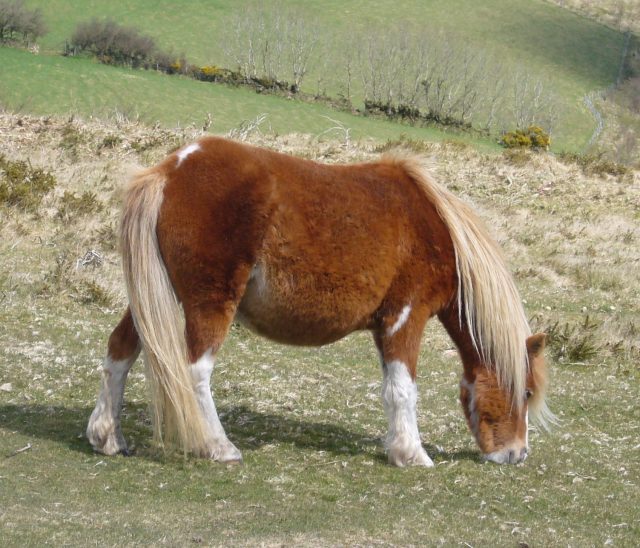Type the name of the breed you're looking for below
[wpdreams_ajaxsearchlite] Don't see the breed your're looking for? Click here and let us know!
Dartmoor pony
| Country Of Origin | England |
| History and Background | The bones of prehistoric horses have been found in chamber tombs dating from Vere Gordon Childe's period III - IV in southern Britain. This would date the bones at the transition from a hunter-gatherer society to an agricultural society (the Neolithic Revolution) at around 3500 BC; the bones are probably from wild horses but domestication may have begun by that date. Archeological investigation from the 1970s has shown that domesticated ponies were to be found on Dartmoor as early as 1500 BC. The first written record, dated to AD 1012, refers to wild horses at Ashburton, and early records from Dartmoor manors refer to ponies being branded and ear-marked. The Dartmoor Pony was used in medieval times for carrying heavy loads of tin from the mines across the moor. It suffered greatly from the infusion of Shetland blood in the years between 1789 and 1832, when breeders decreased the numbers of purebred stock while trying to produce a suitable pit pony. When the mines closed, some ponies were kept for farming, but most of the ponies were turned out onto the moor. Ponies were bred at Dartmoor Prison from the early 1900s up until the 1960s, and used by guards for escorting prisoners. The Dartmoor received Arab blood from the stallion Dwarka, foaled in 1922, as well as Dwarka’s son, The Leat. Welsh pony breeding was introduced from the stallion Dinarth Spark, and infusions of Fell Pony blood was also added. The first attempt to define and register the breed was in 1898, when the ponies were entered into a studbook started by the Polo Pony Society. In 1924, the breed society was founded, and a studbook opened. World War I and World War II were devastating to the breed. Only a handful of ponies were registered during World War II. However, after the war, local people began to inspect and register as many ponies as they could, and by the 1950s, numbers were back up. Two schemes have been introduced to halt the decline in numbers, and broaden the gene pool of the Dartmoor Pony. The Dartmoor Pony Moorland Scheme (DPMS) was established in 1988 and is administered by the Dartmoor Pony Society and the Duchy of Cornwall, as well as being supported by the Dartmoor National Park. In 2004 a new scheme, the Dartmoor Pony Preservation Scheme (DPPS), was introduced, and herds taking part in this new scheme must enter one mare each year to the DPMS. The Dartmoor Pony has been granted Rare Breed status. |
| Use Today | Trail riding, Pleasure pony, Hunting pony, Showing pony, Competition pony |
| Height | 11.1 to 12.3 hands (45 to 51 inches, 114 to 130 cm) |
| Colour | Bay, Black, Brown, Chestnut, Roan |
| Characteristics | The Dartmoor Pony has a small, well-defined body type -- muscular but not overly chunky. Both its head and ears are rather small; the pony's neck, meanwhile, is of average length. The Dartmoor Pony's shoulders slope down to its muscular quarters, which lead to its brawny legs and tough hooves. Its full tail is set quite high. The Dartmoor Pony appears in various colours, including bay, brown, black, and sometimes chestnut. Even rarer is a Dartmoor Pony with a roan coat. White markings on the pony's coat, although allowed, are still very much discouraged. |
| Personality and Temperament | The Dartmoor Pony is a very gentle breed. This trait makes it an ideal mount for children, especially those who are just beginning to learn how to ride. |
| Other Considerations | Dartmoor ponies are native to Britain, but are also seen in other parts of the world including the USA, Continental Europe, New Zealand and Australia. They are often used as foundation breeding stock for the Riding Pony. The breed is a suitable size and temperament for a children’s mount, but it is also quite capable of carrying an adult. They are used for hunting, trail riding, showing, jumping, dressage and driving, as well as everyday riding. All ponies free-roaming on Dartmoor are owned and protected by Dartmoor Commoners. It is illegal for visitors to feed the ponies although it is a common sight to see ponies being fed snacks through an open car window. |



